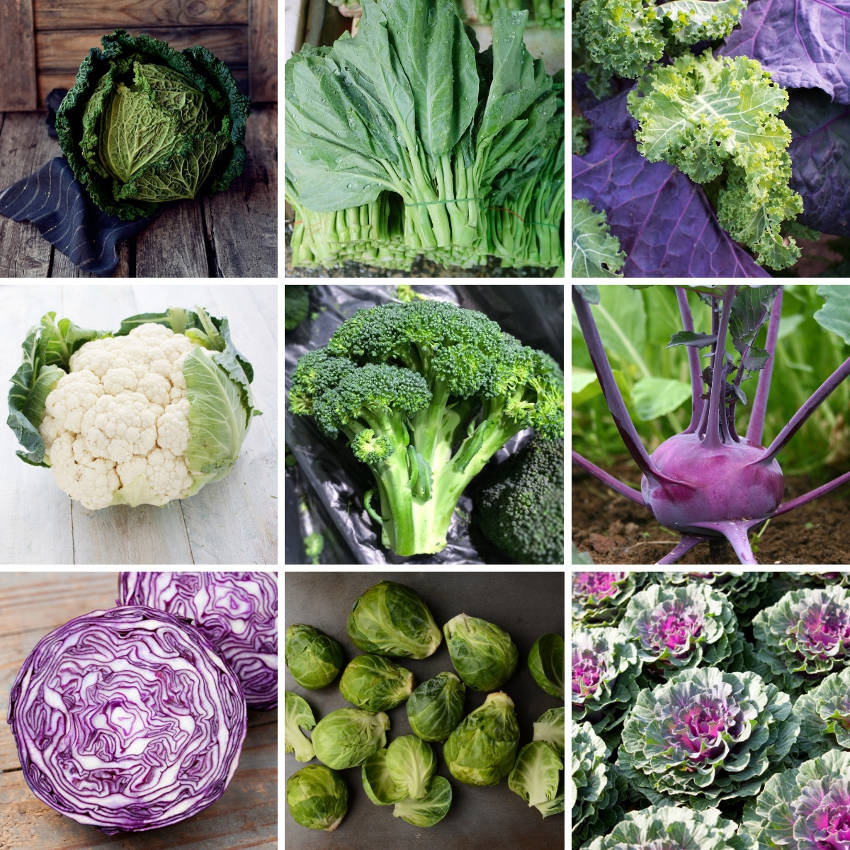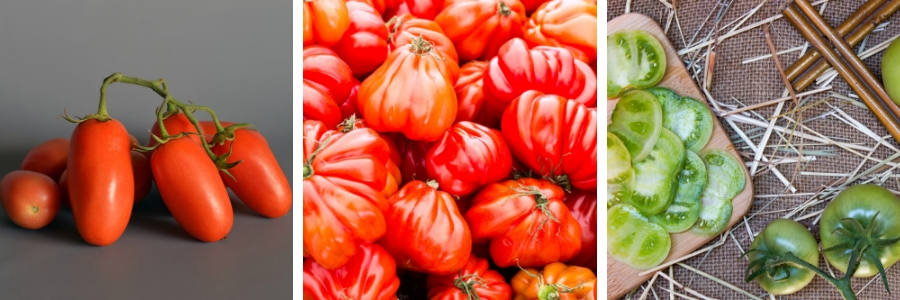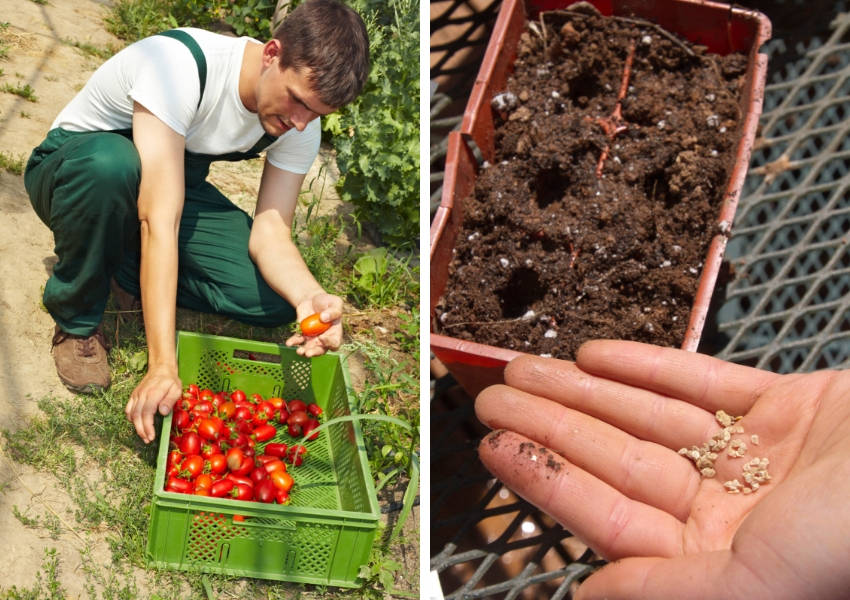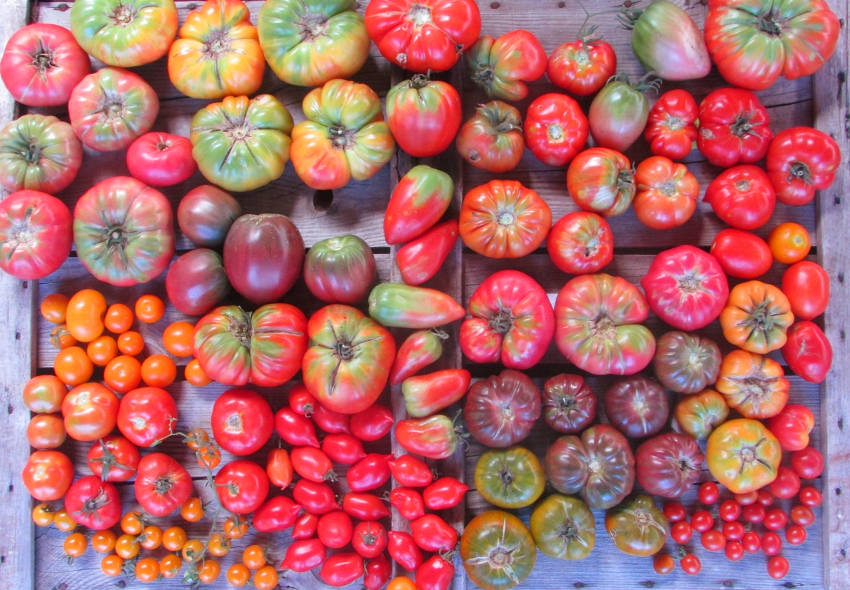One of the great joys of gardening is the enormous choice of seeds available to sow. Whether you're a devotee of carnations or cabbages, there's not only a huge range of species to choose from, but a vast number of cultivars within each one.
Where did all this variety come from? Although it's tempting to put it down to the simple generosity of nature, it's actually a little more deliberate than that.
A process called artificial selection has been used throughout history to shape and refine the plants most commonly grown in gardens and farms. It's largely because of this human activity guiding nature that the seed catalogue's wealth of choice has developed.
What is Artificial Selection?
Artificial selection, also known as selective breeding, is the technique of rearing plants to strengthen their best traits while reducing their less desirable ones. Artificial selection is often used to:
- Enhance the flavour or appetising appearance of edible crops.
- Increase a species' productivity or rate of reproduction.
- Strengthen resistance to disease, drought, or pests.
- Improve the flowering displays of ornamental plants.
Although the idea is simple, it can have unexpectedly dramatic effects. For an example, take the brassica family of vegetables that includes cabbage, kale, cauliflower, and many other kitchen garden staples.
All of these crops descend from a single species of wild mustard growing since ancient times around the Mediterranean. Over the centuries, selective breeding has been used to accentuate different properties of this ancestor, leading to vegetables as distinct as kohl rabi and Brussels sprouts.
Despite their widely differing appearances and uses, all these descendents are still members of the same species, Brassica oleracea. It's simply that selective breeding has pushed the branches of the species family tree in different directions to meet different needs.
Below: Brassica oleracea varieties

Artificial Selection in Action - Heirloom Seeds
Although the brassicas are perhaps the most striking example of variation within a species, artificial selection can also produce less dramatic results which are nonetheless welcome.
Heirloom seeds are particular strains of a species, bred over decades or centuries to home in on a particularly valuable set of traits. As the name suggests, they tend to be prized varieties of seed which are passed down through generations of growers.
They offer the adventurous gardener scope for exploration beyond the typical supermarket fodder, which is mostly bred for shelf life and economy.
A great example of heirloom seeds is found within the tomato family. The following three varieties are all members of the Lycopersicon esculentum species, but otherwise are very different.
San Marzano - A smallish, sweet-tasting Italian tomato variety with long cylindrical fruit, perhaps most famous as a gourmet pizza ingredient.
Evergreen - Featuring mild-tasting, medium-sized fruit which stay green or slightly yellow even when ripe.
Oxheart Red - Produces huge, red fruit weighing up to 450g each, with thick, juicy, meaty flesh.
But of course, artificial selection isn't limited to food crops. Many of today's most-loved flowers, from pansies to petunias, are the direct result of decades of gardener intervention through careful breeding to intensify color, aroma, or vigour.

How Does Artificial Selection Work?
Some modern forms of artificial selection are highly technical, involving scanning a plant's genome for chromosome combinations that tend to produce the desired results.
While this is extremely useful, selective breeding has a much longer history and has traditionally been done in a simpler way. And you can still use these older methods today to improve your own gardening results.
The basic idea is to choose which plants in a generation are allowed to reproduce and pass on their qualities. For example, if you're aiming to grow prize-winning giant tomatoes, you'd take seeds from your most successful fruits and sow these the following year.
For species which rely on cross-pollination(instead of self-pollination) to reproduce, you can speed the selection process up by deliberately pairing successful plants. At the same time, you'd leave the less desirable examples in isolation, effectively removing them from the gene pool.
With both these methods, in a surprisingly short time the desired traits will start to become dominant. As the generations pass, you'll be developing a new cultivar with the precise features you want. It's this normal gardening practice that's responsible for a large part of the heirloom seed range.
Not all artificial selection is done with an end goal in mind. Often, it's a process that happens completely naturally, as gardeners save seeds from their best plants to use again the next year, concentrating their virtues as they go.
What About Genetic Engineering?
You may by now be wondering how all this relates to the modern development of genetically modified crops. The answer is that while the two techniques have a similar aim of improving a plant's dominant characteristics, there's a crucial difference.
With selective breeding, a plant's natural traits are encouraged and strengthened. In contrast, with many GM plants, entirely new information is introduced to the plant's genome.
This could be DNA from a related species, or even from a different order of life altogether. One example of the latter is adding bacterial DNA to soy crops for better disease resistance.
Whether you view GM as a potential solution to world hunger or a worrying development that needs careful monitoring, it's on a different level entirely to traditional selective methods.
The Influence of Natural Selection
Of course, the hand of the gardener isn't the only influence on the way that plant varieties develop. There's always some natural variation in each generation of plants, and these slight changes will change a plant's survival abilities by a minute amount.
This process of natural selection is always working in the background, whether in gardens, farms, or in the wild. Left to its own devices, it will tend to favour survival and reproduction more than any human-desired qualities such as taste or beauty.
But intentional selective breeding can go hand in hand with natural selection, taking advantage of any unexpected but positive variations that nature produces.
The Downside of Selective Breeding
Although selective breeding has been remarkably successful in feeding the planet, it does have a downside. Breeding for particular traits tends to reduce the natural diversity within a branch of a species as time goes on.
This can have the unintended effect of leaving a plant more vulnerable to disease or disaster than it would be in nature. For example, there are nearly 1,000 distinct varieties of wild banana, most of them relatively unpalatable.
Years of commercial selection have lead to the familiar sweet, seedless fruit of today. Around 95% of the world's banana crop now comes from this single cultivar, with a highly limited amount of genetic variation.
Unfortunately, this means the entire banana industry is at risk of destruction from a disease called fusarium wilt. With so little genetic variety, if one plant is at risk they all are, and survival rates are low in an infected plantation.
It's in this kind of situation that heirloom varieties play a vital role. By preserving distinctive or quirky examples of a species, genetic diversity is protected for future generations. It may almost be too late for the typical banana, but heirloom enthusiasts (seed companies like us and gardeners like you) are trying to ensure that most other crops are kept in safe hands.
Artificial selection lies behind almost every plant that's cultivated today. Next time you're enjoying a delicious harvest or a spectacular border display, think of the centuries of effort that lie behind what you've grown - your appreciation for the end result will only be heightened.







